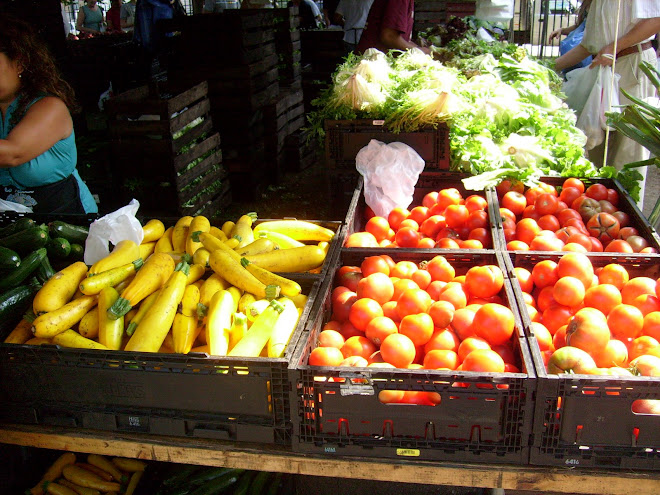Or is it baba ghanoug or baba ganush....to my knowledge, there isn't a "right" translation and spelling from Arabic to English and it is often spelled differently everywhere you look. This popular, tangy eggplant dip grew in popularity in the U.S. mostly in the last ten years or so. I think of it as hummus's lesser known sibling. The hummus boom made the garbanzo bean version of this dip wildly popular and I have to wonder, why not eggplant? What made hummus so much more common? The plethora of hummus flavors out there is overwhelming. There is everything from roasted pepper or olive hummus to Buffalo-style hummus and pesto hummus. I have even seen edamame hummus. While these are exciting alternatives to the standard, I see no reason to limit myself to all beans. I love a good batch of baba ghanouj (my preferred spelling) with it's vague smokiness from the roasting, creaminess from the tahini, and bit of acidity on the tongue. I wonder, why can't we change a few seasonings and make flavored baba ghanouj the way some hummus companies and kitchens make flavored hummus?
Traditional baba ghanouj is made with a roasted eggplant (roasted over a flame, if possible, to achieve that smokiness), tahini, lemon juice, and olive oil. To be really traditional, you could add a wee bit of pomegranate molasses, found in Middle Eastern stores, and I love adding toasted cumin seeds and some sweet paprika. That is the classic version--not too far off from what is added to garbanzo beans for traditional hummus.
 |
| Versatile ingredients all ready to go! |
Italian Baba Ghanouj with Balsamic Reduction and Stewed Figs
1 medium eggplant
6-8 cloves garlic, with skins on
2 T extra-virgin olive oil+ 4 T
1/3 c +2 T inexpensive, everyday balsamic vinegar
8 dried figs
2 t freshly squeezed lemon juice
1/2 t chopped fresh oregano, or 1/4 t dried
1/2 t sea salt
freshly ground black pepper
crusty bread, focaccia, or flatbread for serving
Preheat to oven to 350 degrees. Wash the eggplant and coat gently with a tablespoon of olive oil. Place on a large piece of foil that is laid across a baking sheet. Rub cloves of garlic with another tablespoon of oil. Nestle them near the eggplant in the center of the foil and wrap them loosely.
Roast for about 40 minutes, checking after about 25 minutes to check the garlic cloves. If they are very soft before the eggplant, pull them out and let them cool. When eggplant is done roasting, open the foil and also let it cool.
In a small saucepan, cook the balsamic vinegar over medium heat to reduce by 1/2. It is done when it is thick and syrupy. You can go a little over and reduce more, but don't reduce less. Transfer to a bowl.
Without washing the pot, add about 1/2 c water, 2 T balsamic vinegar, and the dried figs. Simmer until figs are very tender and water/balsamic mixture is just about evaporated. Let cool, then quarter the figs.
When eggplant is cooled, slice open and scrape out the insides into a mixing bowl. Mash with lemon juice, oregano, salt, pepper, and olive oil to taste. Add about half of the balsamic reduction and taste, adding and adjusting salt and lemon, as well.
Pour into a low flat bowl to serve. Garnish the top with olive oil, balsamic reduction, and quartered figs. Serve room temperature with warm bread.








No comments:
Post a Comment